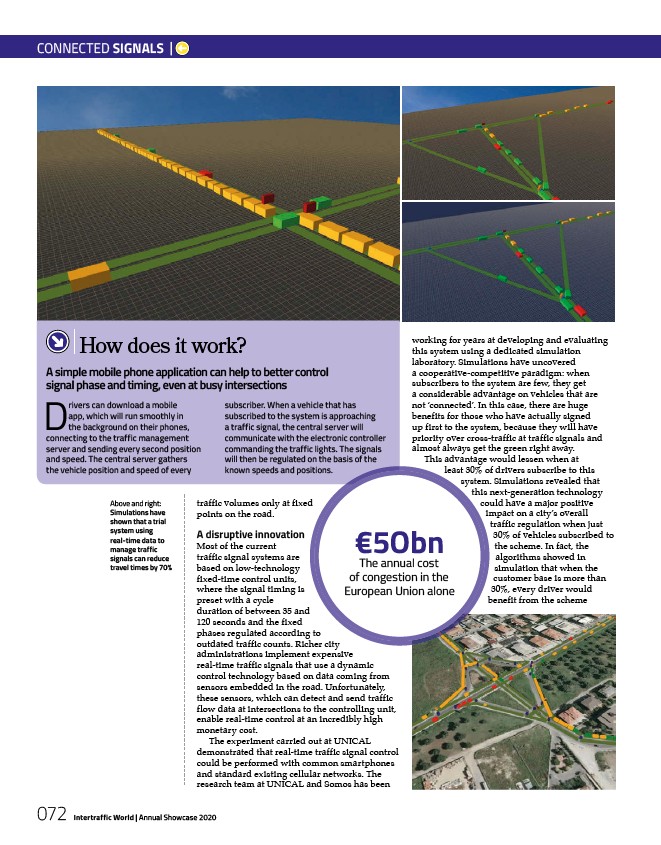
CONNECTED SIGNALS |
Above and right:
Simulations have
shown that a trial
system using
real-time data to
manage traffic
signals can reduce
travel times by 70%
traffic volumes only at fixed
points on the road.
A disruptive innovation
Most of the current
traffic signal systems are
based on low-technology
fixed-time control units,
where the signal timing is
preset with a cycle
duration of between 35 and
120 seconds and the fixed
phases regulated according to
outdated traffic counts. Richer city
administrations implement expensive
real-time traffic signals that use a dynamic
control technology based on data coming from
sensors embedded in the road. Unfortunately,
these sensors, which can detect and send traffic
flow data at intersections to the controlling unit,
enable real-time control at an incredibly high
monetary cost.
The experiment carried out at UNICAL
demonstrated that real-time traffic signal control
could be performed with common smartphones
and standard existing cellular networks. The
research team at UNICAL and Somos has been
072 Intertraffic World | Annual Showcase 2020
working for years at developing and evaluating
this system using a dedicated simulation
laboratory. Simulations have uncovered
a cooperative-competitive paradigm: when
subscribers to the system are few, they get
a considerable advantage on vehicles that are
not ‘connected’. In this case, there are huge
benefits for those who have actually signed
up first to the system, because they will have
priority over cross-traffic at traffic signals and
almost always get the green right away.
This advantage would lessen when at
least 30% of drivers subscribe to this
system. Simulations revealed that
this next-generation technology
could have a major positive
impact on a city’s overall
traffic regulation when just
30% of vehicles subscribed to
the scheme. In fact, the
algorithms showed in
simulation that when the
customer base is more than
30%, every driver would
benefit from the scheme
How does it work?
A simple mobile phone application can help to better control
signal phase and timing, even at busy intersections
Drivers can download a mobile
app, which will run smoothly in
the background on their phones,
connecting to the traffic management
server and sending every second position
and speed. The central server gathers
the vehicle position and speed of every
subscriber. When a vehicle that has
subscribed to the system is approaching
a traffic signal, the central server will
communicate with the electronic controller
commanding the traffic lights. The signals
will then be regulated on the basis of the
known speeds and positions.
€5Obn The annual cost
of congestion in the
European Union alone